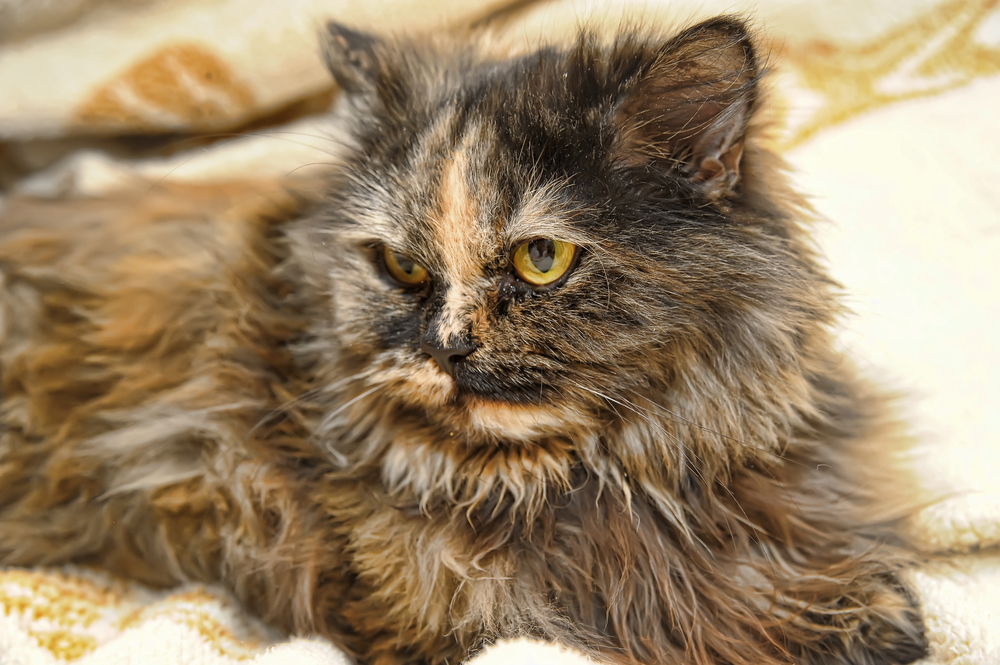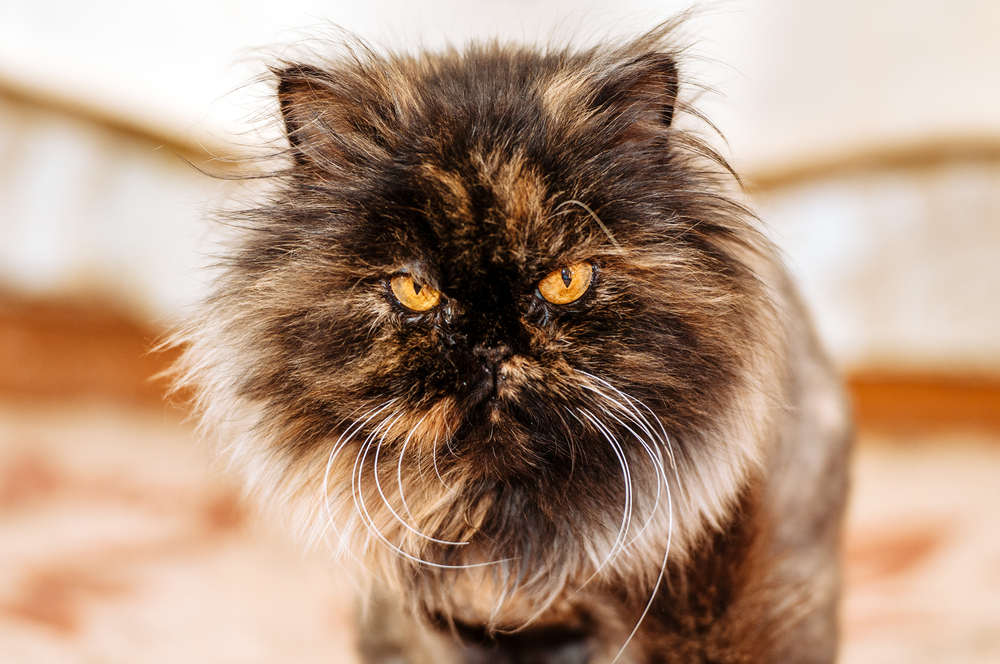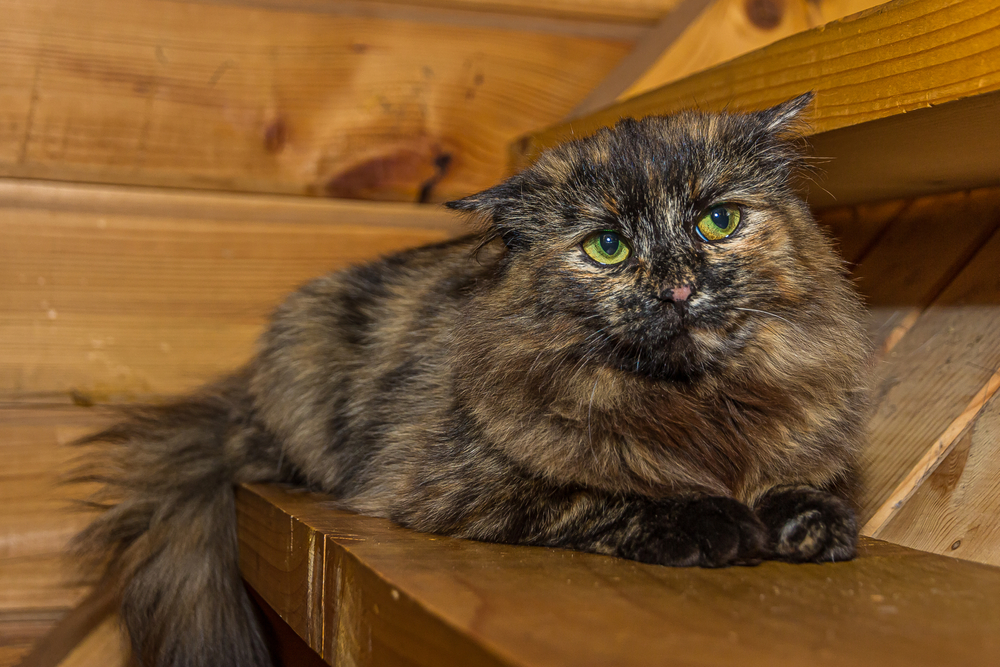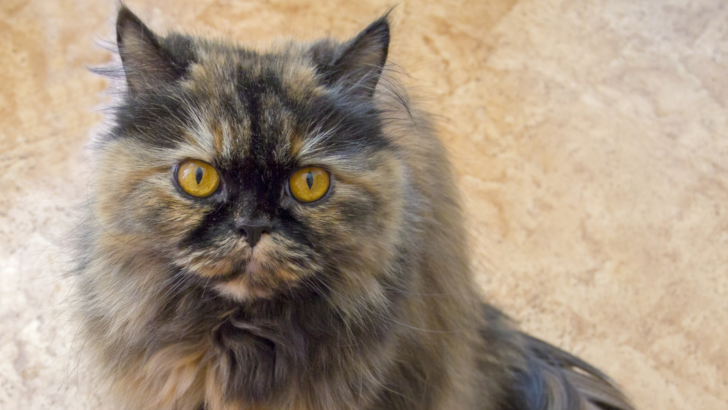A tortoiseshell Persian cat is a sweet creature that so many people love and adore. However, you’re not really sure if you should get one for yourself.
Persian cats are believed to be one of the oldest cat breeds in the world. They’re fluffy and cuddly, but their faces look quite grumpy – which is just part of their appeal.
In this article, we’ll talk about the tortoiseshell Persian cat. This isn’t a specific cat breed, but rather a cat with a multicolored coat.
People tend to call them torties, and they got their name because they resemble a tortoiseshell.
It’s a little bit unclear when the first long-haired cats appeared in history. The first documented ancestor of the Persian cat imported to Italy from Persia was in the year 1620. It became more popular throughout Europe as the years went by, because of its luxurious appearance.
At the start of the 21st century, Leonard Doncaster proved that the tortoiseshell is a female heterozygote of orange and black, but they appeared a while before that.
Torties appear in almost all cat breeds, but they’re almost always female.
Now that the brief history lesson is done, let’s get into the actual facts that will help you determine if this is the right cat for you.
8 facts you need to know about the tortoiseshell Persian cat

1. They’re almost always female
Tortie cats are almost always female. This means that any tortoiseshell Persian cats are also mostly going to be female.
This happens because the unique coloring is found on the X chromosome. The combination of colors (black, brown, red, white) are all linked together. That’s why two X chromosomes are needed in order for this pattern to appear.
This is not to say that there are no male tortoiseshell Persian cats, but they are extremely rare. Even if you happen to come across a male tortie, there’s a good chance that he won’t live long or that he already has extremely poor health.
Because of his genetics, he simply lacks a lot of factors that will make him a healthy kitten who will live a fulfilling life.
2. They’re suitable for households with seniors
Persian cats are usually very passive cats who simply love to cuddle and snuggle up to people to take a nap. They’re quiet and usually extremely caring.
On the other hand, tortoiseshell cats are known for being extremely independent. They can become a little bit sassy at times if you come around to play with them when it’s not something that they want to do.
All of these things make the tortoiseshell Persian cat the perfect companion for seniors. She won’t need anyone’s attention, but she’ll be there to soothe her owners when they need her.
She also doesn’t need too much playtime or exercise, because she’ll find ways to play around without making a huge mess. This is a very small cat that won’t get into too much trouble.
These patient cats, who are so sweet and caring, will be the perfect companions to bring home to your grandparents and make their lives so much better.
3. They’re not easily trainable

A little bit of a downside to the tortoiseshell Persian cat is the fact that they’re not easily trainable. They’re not the most intelligent cats, so they don’t care about performing tricks for treats.
She’s a very stubborn cat, and she doesn’t like to be told what to do. Usually, she’ll be the best thing to happen to you because she’s so calm and collected.
However, she couldn’t care less about your commands. You won’t be able to take her out for walks because she won’t tolerate a leash.
This also means that she won’t let you put clothes on her. Any tricks that you thought about teaching her will fall into water, because she’s sassy like that.
So, if you want a cat that’ll do party tricks, this isn’t the companion for you.
She’ll easily learn where to do her business and when it’s time to eat, but anything more than that isn’t her cup of tea, and you should accept that.
4. They bring good luck
Throughout history, many cultures believed that tortoiseshell cats bring good luck and fortune. The folklore of several cultures has deemed this to be true, which gave cats with this color of fur the nickname of “money cats.”
The people in Japan believe that torties bring good luck against shipwrecks. It’s believed that bringing one on your ship or having a tortie on the harbor will increase the chances of the ship making it back to the shore safely.
On the other hand, in England, for example, they believe that torties actually bring bad luck. So, I guess it depends on the interpretation.
5. They need regular grooming

Tortoiseshell Persian cats need regular grooming, or they may turn into a huge ball of matted fur. You don’t want that for your beloved cat, trust me.
Persian cats have two coats of fur. The upper coat consists of long hairs that need to be brushed with a softer brush because it can shed a lot, and can become a huge lump of fur.
The undercoat needs a sturdier brush. Most people use a metal comb for the undercoat because it’s much harder to get to and properly detangle.
You can, of course, take your cat to a professional groomer, but I genuinely believe that this isn’t much of an issue for you.
If you see that your cat has matted fur, then the best option is to cut it all off. I know that you like her fluffiness, but this is important for her health.
A sanitary trim every so often is highly recommended. I know that your cat is grooming herself regularly, but a sanitary trim makes things a lot easier for everyone involved.
6. Torititude is real
I believe that you’ve already heard of tortitude. If you haven’t, well it’s exactly what it sounds like.
Tortitude isn’t really based on any scientific facts. There’s no evidence that suggests that the color of a cat’s fur determines her personality.
However, owners have made it abundantly clear that their tortoiseshell Persian cats have much more attitude than other cats. The sass is there and they don’t like to be told what to do.
If you try to hold her, she’ll give you a look and probably run away. She may even bring out her claws.
Of course, these cats are extremely nice and usually wouldn’t hurt their owners. However, if she’s not up for playing with you or cuddling, then you better be sure that she won’t be tamed.
If you’re the type of person who likes their cat to be obedient, then you may want to search for another one.
7. They’re not great with kids

We’ve already talked about how tortoiseshell Persian cats are perfect for seniors. They’re calm and patient with their owners and they don’t demand a lot of attention.
Those are some of the reasons why they’re not the best pets for families that have small children. Children are loud and playful, which means that this cat wouldn’t be the perfect companion for them.
If you have children, you should look for a cat that has high energy levels and that doesn’t lose her temper so quickly. A tortoiseshell Persian cat has an attitude and likes to have her space.
She’s extremely independent, so having to play with children and not having time to sleep will only make her agitated. This can lead to aggression if you’re not careful enough.
These cats are usually not aggressive, and they will never draw their claws on you unless they’re provoked. So if your sweet kitty is scratching and biting, then it’s probably because she’s been agitated.
Maybe try finding a better companion for your children.
8. They can develop health issues

One of the most common health issues that a tortoiseshell Persian cat can have is troubled breathing. If she’s sensitive to any type of changes in her environment, it’ll cause her to have difficulty breathing.
You can probably tell that the faces of this breed seem to be a little squished. This makes it harder to breathe because there isn’t enough airflow through their noses.
That’s one of the most common reasons why people bring Persian cats to the veterinarian. I’d recommend that you bring your cat to a specialist whenever you can, even if it’s just for a check-up.
Other health issues that this cat can develop are usual issues that any cat owner is familiar with. The most common is ringworm because this can also affect the owners, and you need to be careful.
She can also develop certain skin conditions that will cause her fur to fall out, but it can be preventable with proper grooming.
All in all, she’s a very healthy cat that won’t give you a fright every time she coughs a little bit. It’s probably nothing more than a hairball.
But you should still be very careful and treat her will all the kindness in the world.
